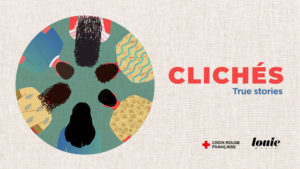
Shut Up Claudia
Description
The main objective of the platform +CO(mpensa)2 is to improve the efficiency of the Spanish Red Cross’ carbon footprint offset process. This tool enables the centralisation of the documentation associated with the projects of ecosystem restoration and carbon emissions offset, along with follow-up monitoring– using photogrammetry obtained by drone flights.
Context
Calculating the carbon footprint of the Spanish Red Cross is the first step to action, as it allows the reduction of emission and the implementation of compensation plans. This is how the +CO(mpensa)2 project was born, with the purpose to influence the entire national territory.
In 2021, the Spanish Red Cross’ carbon footprint was 20,919.40 t CO2eq (to better visualise this amount, it is approximately equivalent to the volume of the Cheops Pyramid). For this reason, +CO(mpensa)2 aims to offset the emissions that the organisation is not able to reduce through reforestation and ecosystem restoration projects to improve biodiversity.
In order to achieve a more efficient carbon emissions offset process, the platform has been created as a result of a pilot project, which investigates how to centralise information and streamline the reforestation methodology of the Spanish Red Cross project, CO(mpensa)2. The platform is a holistic tool that supports the different phases of the project, which are: validation of opportunity areas, monitoring and individualisation of species through drone flights, risk management and calculation of the absorption of the CO2 generated, and the ecosystem services provided by the restoration. Thanks to this pilot, a series of future implementations are available to any entity wishing to contribute with its vision to this tool.
The particular objective of the platform is to meet the ultimate CO(mpensa)2 target, which is to achieve climate neutrality of the Spanish Red Cross by 2030.
Technical details & Operations
This platform is involved in the different phases of emission offset projects. It speeds up the process of validating areas of opportunity for reforestation in a very simple way, which saves many resources. After entering the cadastral reference, the automated consultation is carried out on different national websites, such as the IGN, resulting in a guidance report for the implementation of reforestation. This consultation requires maintenance as the public data websites are subject to change.
Photogrammetry obtained from drone flights and satellite imagery is used to obtain monitoring information on the reforested land. Once the data has been captured, the information processing phase begins to carry out the inventory of each terrain and automate the calculation of the benefits generated at three levels: tree, land or parcel, and project. Finally, this information is visualised on the platform with 2D and 3D images, due to the digital copy of the ecosystem.
Through the development and use of the different technological tools mentioned above, it is possible to improve decision-making related to the suitability of the land to be reforested, and to monitor the project in the different phases of execution of the restoration work.
The CO(mpensa)2 project has defined objectives for 2030 and 2050 and its ecosystem restoration actions are carried out throughout the year. The offset projects are subject to the carbon footprint emitted and measured by the Institution, so the annual targets vary according to the annual carbon footprint registered.
On the other hand, according to Spanish legislation, emission absorption projects have a durability of 30 years, so the permanence of the projects must comply with this timeframe implementing forestry maintenance tasks. All this comes together with the demographic challenge, the importance of adding new models and the search for a fair, resilient and sustainable future.
To summarise, this project allows:
- Identification of opportunity spaces to be restored according to current legislation.
- Monitoring of reforestation using the digital platform to improve automation and facilitate the certification of CO2 absorption.
- Development of a digital copy of the restored land to streamline monitoring.
- National centralisation of the documentation on emission offset projects.
Deployment & Impact
The platform has already been implemented in one of the Spanish Red Cross’ projects in Dehesa de los Machos, in Valverde del Camino (Huelva). It consists of 68 hectares, spread over 5 land plots, which will absorb 430 tonnes of CO2 over the next 30 years. It also has information on projects in other locations such as Toledo, Navarra, Valladolid, Teruel, and La Rioja.
This project was born in 2021 and due to its complexity, it started with two reforestation projects. However, during this year 2023, thanks to the knowledge gained from the evolution of this project, reforestations will be carried out to offset emissions in eight different provinces and more collaborations between landowners and the Spanish Red Cross are expected to emerge.
The daily lives of millions of people are at stake. The humanitarian mandate of the Red Cross does not allow energy to continue to be wasted while people are unable to maintain an adequate temperature in their homes. Climate change is hurting the most vulnerable groups, who ironically contribute the least to it because of their own lack of resources. Therefore, counteracting carbon dioxide and greenhouse gas emissions through reforestation is already a reality for the Red Cross.





